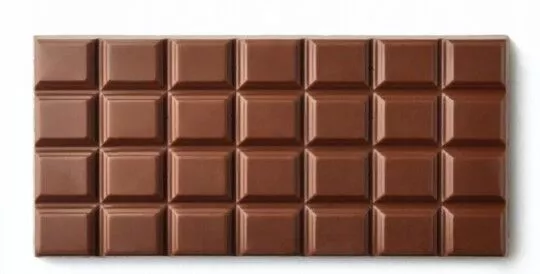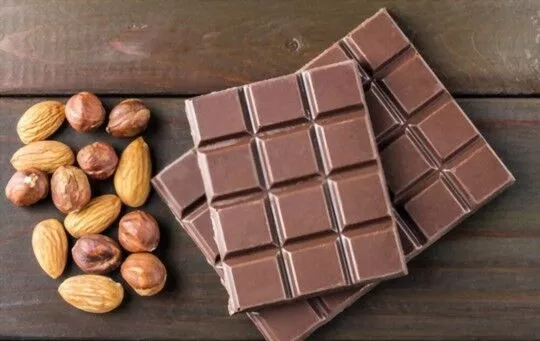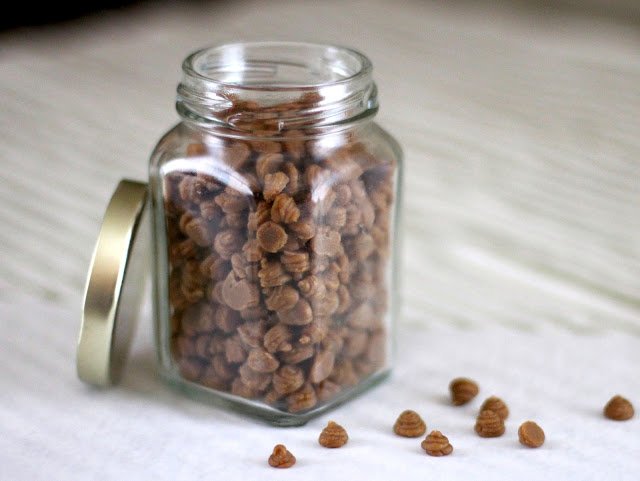If you’re a fan of white chocolate, you know how delicious it can be.
But sometimes you may find yourself in a situation where white chocolate isn’t available or is too expensive.
Fortunately, there are several substitutes that can be used to achieve a similar flavor and texture without breaking the bank.
In this article, I’ll share five of the best substitutes for white chocolate so that you can still enjoy your favorite treats without any compromise on taste or quality.
What is White Chocolate?

White chocolate is a type of chocolate that has been made with cocoa butter and milk solids, but no cocoa beans.
The resulting product is milder in flavor than dark or milk chocolates, and it has a unique sweetness to it.
White chocolate can be used both as an ingredient in baking recipes or as an edible treat on its own.
It comes in various forms—bars, chips, chunks—and different color shades ranging from cream to ivory white.
The two main ingredients that makes this kind of chocolate so special are cocoa butter and milk solids.
Cocoa butter is the fat extracted from cocoa beans which gives white chocolate its smooth texture when melted; while milk solids give the confectionery its sweet taste without using sugar.
To make sure you get authentic quality white chocolate, look for products labeled ‘white couverture’ or ‘white compound’, which means that the product contains only real ingredients such as real cocoa butter and not vegetable fats like palm oil as substitutes for cocoa butter.
The 5 Best Substitutes For White Chocolate
White chocolate is a delicious treat, but it can be difficult to find.
Fortunately, there are a few substitutes that can be used in its place.
Here we look at five alternatives for white chocolate:
1 – Milk Chocolate

Milk chocolate is a great substitute for white chocolate in many recipes.
The two types of chocolate are similar in that they both contain cocoa butter, but milk chocolate also contains milk solids and sugar, which give it a slightly different flavor profile than white chocolate.
Milk chocolate has a creamy texture and sweetness that can be used to replace the sweet flavor of white chocolate.
It’s important to note that when substituting milk chocolate for white, you may need to adjust the amount of sugar or other sweeteners used in your recipe since milk chocolates are naturally sweeter than their white counterparts.
When baking with milk chocolate, it’s best to use chips or chunks rather than bars as these will melt more evenly and won’t leave any lumps in your batter.
Milk chocolates also work well when making truffles or ganache-based desserts such as cakes and cupcakes.
If you’re looking for an even richer flavor, try using dark or semi-sweet chocolates instead of milk – just keep in mind that these varieties have higher levels of cocoa solids so you’ll likely need to reduce the amount used compared to what would be required with white or milk chocolates.
2 – Unsweetened Chocolate

Unsweetened chocolate, also known as baking or bitter chocolate, has the same cocoa butter content as white chocolate but without any added sugar.
This makes it perfect for baking recipes that require melted white chocolate since you can add your own sweetener to taste.
To use unsweetened chocolate in place of white chocolate, simply melt it and then mix in an equal amount of sugar or other sweetener such as honey or maple syrup until you reach the desired sweetness level.
You may need to adjust the amount of liquid used in the recipe slightly if using this substitution since unsweetened chocolate is much denser than white chocolate.
Unsweetened chocolate also works well when making ganache and other frostings that call for melted white chocolate.
Simply follow the same process as above and add additional cream or milk to thin out the mixture if needed.
The only downside is that unsweetened chocolate won’t give you the same creamy texture and flavor profile as traditional white chocolates do, so keep this in mind when deciding whether or not to use it as a substitute.
3 – Dark Chocolate

Dark chocolate has a richer, more intense flavor than white chocolate and can be used to add depth and complexity to dishes.
Dark chocolate also contains more cocoa solids, which gives it its distinctive flavor and color.
The key when substituting dark chocolate for white is to use less of it since the flavor will be much stronger.
Start with half the amount of dark chocolate that your recipe calls for in white, then adjust as needed according to taste.
You may also need to reduce other ingredients such as sugar or butter if you find that the mixture becomes too rich or sweet after adding the dark chocolate.
Dark chocolate can be used in baking cookies, cakes, brownies, and other desserts; melted into sauces; stirred into hot drinks like coffee or hot cocoa; or even added to savory dishes like chili or mole sauce for an unexpected twist!
4 – Bittersweet Chocolate

Bittersweet chocolate has a richer flavor and darker color, so it won’t give you the same lightness or sweetness of white chocolate.
However, bittersweet chocolate can still provide a delicious depth to your baked goods that will be sure to please.
When using bittersweet chocolate as a substitute for white chocolate, you’ll want to adjust the recipe accordingly.
For example, if the recipe calls for one cup of white chocolate chips, try using three-quarters of a cup of bittersweet chips instead.
You may also need to add additional sugar or other sweeteners to make up for the difference in sweetness between the two types of chocolates.
If you’re looking for an even more intense flavor than what’s provided by bittersweet chocolate alone, consider adding some cocoa powder as well.
This will help deepen the flavor and create an even more decadent treat!
5 – Butterscotch Chips

Butterscotch chips have a similar sweetness and creamy texture, but with the added flavor of butterscotch.
This can be a great way to add an extra layer of flavor to your baked goods.
Butterscotch chips are also much easier to find than white chocolate, making them an ideal substitution when you don’t have any on hand.
When using butterscotch chips as a substitute for white chocolate, it’s important to remember that they will melt differently due to their higher sugar content.
For this reason, it’s best to use them in recipes where the melted chips won’t be exposed directly to heat (such as cookies or brownies).
You can also try adding some butter or cream cheese along with the butterscotch chips for added richness and creaminess.
This will help make up for the difference in melting points between white chocolate and butterscotch chips.
Conclusion
In conclusion, white chocolate is a delicious treat, but it can be difficult to find or too expensive.
Fortunately, there are several substitutes that can be used to achieve a similar flavor and texture without breaking the bank.
The five options we’ve discussed above are milk chocolate, unsweetened chocolate, dark chocolate, bittersweet chocolate, and butterscotch chips.
Each of these alternatives offers a unique flavor and texture, so experiment with them to find the one that works best for you.

The 5 Best Substitutes For White Chocolate
Ingredients
- Milk Chocolate
- Unsweetened Chocolate
- Dark Chocolate
- Bittersweet Chocolate
- Butterscotch Chips
Instructions
- Pick your favorite substitute from the list above.
- Follow cooking directions for your selected substitute with the proper ratio of ingredients.
Hi, I'm Benjamin. I love cooking, long walks, and my girlfriend! Here you’ll find simple and delicious recipes that you can make in 30 minutes or less.

